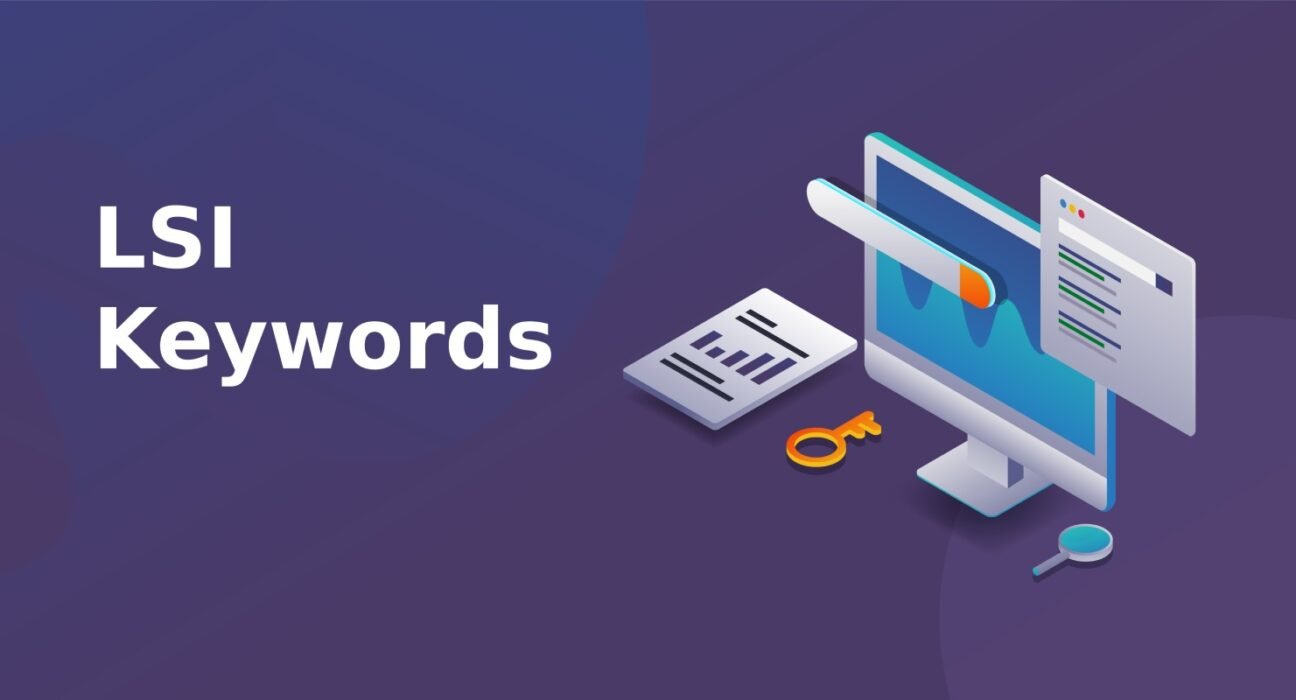LSI Keywords: What They Are and How to Use Them in Blogs (Complete 2025 Guide)

🔍Introduction: The Overlooked SEO Trick That Can Boost Your Rankings
When bloggers think about improving their SEO, the usual suspects come to mind — backlinks, meta tags, keyword density, and maybe even content length. But there’s one often-ignored factor that can quietly make a big impact: LSI keywords.
Whether you’re just starting out or have been blogging for years, learning how to use LSI keywords the right way can give your blog content the clarity and context Google loves — and help your posts climb higher in search results.
In this post, you all learn:
-
What LSI keywords really are
-
Why they matter for SEO
-
How to find and use them naturally in your blog posts
Let’s dive in.
📘 What Are LSI Keywords?
LSI stands for Latent Semantic Indexing — a fancy term, but the idea is simple. LSI keywords are words and phrases that are closely connected to your main keyword in meaning. They’re not exact synonyms, but they help paint a clearer picture of your topic by adding relevant context.
📌 Example:
Imagine you are writing a blog post about Apple.
How would Google figure out whether you mean the fruit or the tech company?
LSI keywords help clarify the topic.
If your content includes words like:
-
“iPhone”
-
“Tim Cook”
-
“iOS”
-
“MacBook”
Google understands you’re referring to Apple Inc. — not the fruit.
🧠 Why LSI Keywords Matter in 2025 (More Than Ever)
Search engines today are smarter than ever. Instead of relying only on exact-match keywords, Google uses contextual clues to understand your content. That’s where LSI keywords shine.
🔹 1. They Improve Content Relevance
Using LSI keywords helps Google better understand what your content is about. The clearer your content, the better your chances of ranking higher.
🔹 2. They Help Avoid Keyword Stuffing
Overusing your primary keyword can get you penalized. LSI keywords let you naturally vary your language, improving readability and SEO.
🔹 3. They Expand Search Visibility
Including related terms increases your chances of ranking for multiple keywords, not just one. That means more traffic opportunities.
🆚 LSI Keywords vs. Synonyms — What’s the Difference?
Let’s clarify something:
LSI keywords are not the same as synonyms.
Here’s a simple breakdown:
| Type | Example | Meaning |
|---|---|---|
| Main Keyword | “Digital Marketing” | Main topic |
| Synonym | “Online Marketing” | Similar meaning |
| LSI Keyword | “SEO”, “Content Strategy”, “Email Campaigns” | Related concepts, not synonyms |
🔍 How to Find LSI Keywords (Free and Easy Methods)
Finding LSI keywords is easier than you think. You don’t need expensive SEO tools — just a few smart strategies.
✅ 1. Google Autocomplete + Related Searches
Start typing your main keyword into Google and look at the autocomplete suggestions. These are terms people are actively searching.
Scroll to the bottom of the search results page — you’ll see Related Searches that give even more LSI keyword ideas.
✅ 2. LSIGraph.com
This free tool generates LSI keyword suggestions. Just enter your main keyword and get a list of semantically related terms.
✅ 3. AnswerThePublic
This tool creates a visual map of questions and phrases related to your keyword. Great for LSI and long-tail keyword inspiration.
✅ 4. Ubersuggest
Neil Patel’s tool shows you keyword ideas, search volume, and SEO difficulty. Look under “Related” or “Suggestions” for LSI-type keywords.
✅ 5. People Also Ask (on Google)
These snippets give great insight into related topics and phrases users are interested in.
✍️ How to Use LSI Keywords in Your Blog Content
It’s not enough to find LSI keywords — you need to use them strategically and naturally in your blog.
✅ 1. In Subheadings (H2s and H3s)
Add LSI keywords to your subheadings to strengthen topical relevance and SEO.
Example:
Instead of: “Email Tips”
Use: “Email Campaigns That Support Your Content Strategy”
✅ 2. Sprinkle Throughout the Content
Place LSI keywords where they fit naturally — don’t force them. Avoid repeating the same keyword too many times.
Don’t Do This (Keyword Stuffing):
“Email marketing is a great email marketing strategy for your email marketing goals.”
Do This:
“Email marketing, when combined with a solid content strategy and audience segmentation, can significantly boost engagement.”
✅ 3. Use in Image Alt Text and Meta Description
Don’t forget to optimize image alt text with LSI terms. Also, add one or two related phrases in your meta description.
✅ 4. Include in Anchor Texts
When linking to other articles (internal or external), use LSI-related words as anchor text. It improves topic signals and user experience.
🧠 Real-World Example: LSI Keywords in Action
Let’s say you’re writing about: “How to Start a Blog”
Main Keyword: How to start a blog
LSI Keywords you can include:
-
WordPress setup
-
Domain name
-
Content ideas
-
Blog niche
-
SEO for blogs
-
Monetization
Your headings could be:
-
H2: Choosing the Right Blog Niche
-
H2: Setting Up Your WordPress Blog
-
H2: Planning a Content Strategy for Growth
-
H2: Basic SEO Tips for Beginner Bloggers
By using LSI keywords in your headings and body text, you’re telling Google:
“This content is not just about starting a blog — it’s a complete, high-quality guide.”
⚠️ Common Myths About LSI Keywords
❌ “Google Uses LSI Technology from the 1980s”
This is a misconception. Google doesn’t technically use Latent Semantic Indexing as it was originally defined, but it does understand semantic relevance through machine learning.
❌ “You Need Dozens of LSI Keywords to Rank”
No. A few well-placed related keywords are enough. Focus on natural flow and user intent, not quantity.
🔥 Bonus Tips to Maximize LSI Keyword Impact
-
Use 5–10 related terms in a 2000-word article
-
Combine with long-tail keywords for maximum reach
-
Analyze top-ranking content and look for recurring terms
-
Use tools like Surfer SEO or Frase to compare keyword usage
-
Write for humans first, optimize for Google second
📝 Quick Checklist for Using LSI Keywords in Blogs
| Task | Done? ✅ |
|---|---|
| Found 5–10 LSI keywords | |
| Used LSI terms in subheadings | |
| Naturally placed LSI in content | |
| Included in image alt text | |
| Mentioned in meta description | |
| Used as internal anchor text |
In 2025 and beyond, search engines reward context-rich, helpful content. LSI keywords are a powerful way to provide that context without sounding robotic or repetitive.
If you want to:
-
Increase organic traffic
-
Improve keyword relevance
-
Build content authority
Then start integrating LSI keywords into your blogging strategy today.










